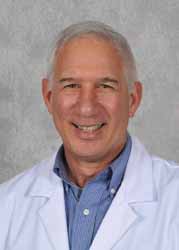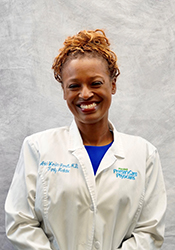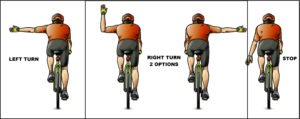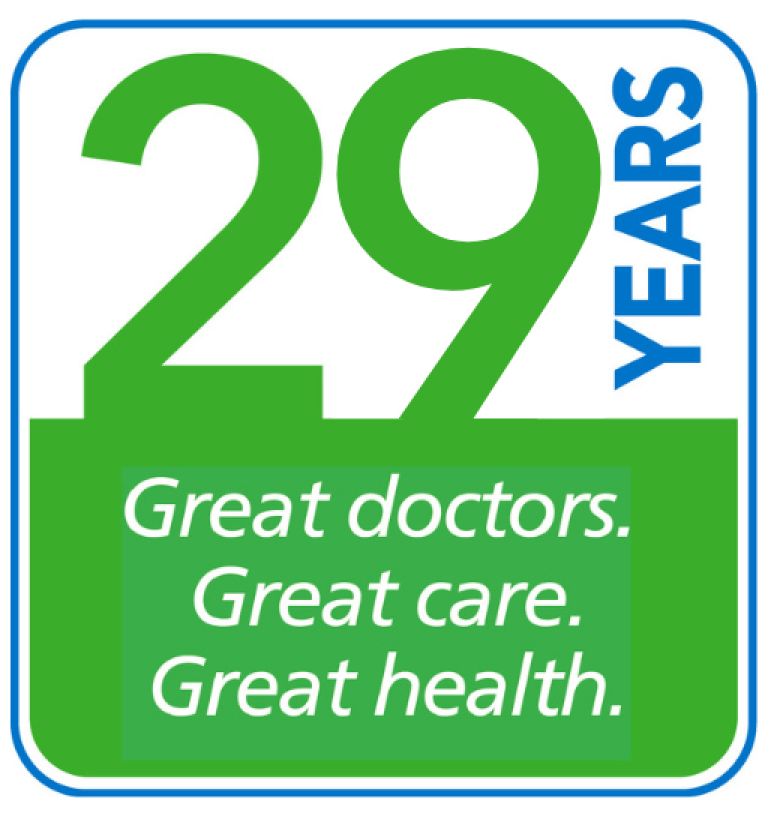Category Archives: Family Health
I Recovered From COVID-19. Why Am I Still Sick?
BY: VICTOR M. PLAVNER, M.D.
Some people have recovered from COVID-19, but months later they still have symptoms such as shortness of breath, weakness, a racing heart and trouble thinking.
If you are one of these unfortunate “long haulers,” you may continue to be sick even though you have recovered and tested negative for SARS-CoV-2, the virus that causes COVID-19. Most people who get the disease make a full recovery, but it’s estimated that 10%-30% of patients continue to experience symptoms months after their initial diagnosis.
Anyone can be a long hauler
Even young people and those who had only mild cases are affected. About one in five young adults reports prolonged problems, and some people who were never hospitalized can’t climb stairs, get winded easily, and need oxygen for shortness of breath.
Doctors aren’t sure what causes these drawn-out symptoms, but an inflammatory response may be responsible. COVID-19 makes your body’s disease-fighting antibodies overreact, attacking healthy cells and damaging tissues and organs. If this inflammatory response continues, the outcome could be “long Covid” that lasts for weeks or months.
First steps toward treatment
It is not yet well understood how to treat long Covid, but anti-inflammatory drugs may be one answer. Also, doctors are finding that a program of rehabilitation can help. People with lingering fatigue can benefit from gradual exercise, including breathing exercises to increase lung capacity. And those with cognitive issues can recover with the help of a neuropsychologist. Ask your doctor about possible treatment plans.
Since COVID-19 is a relatively new disease, its long-term health effects aren’t fully understood. One thing is certain, however: the best way to avoid complications is to prevent COVID-19.
Common ‘long Covid’ symptoms
If you continue to suffer any of these symptoms after recovering from Covid-19, you may be a Covid long hauler:
- Cough
- Fatigue
- Joint and chest pain
- Shortness of breath
- Headaches
- Muscle pain
- Changes in smell: food may smell bad
- Confusion, forgetfulness, trouble concentrating
 Dr. Plavner is a Maryland Primary Care Physicians, LLC partner, and practices at the MPCP Arnold office. He earned his medical degree at the University of Louvain, Brussels, Belgium; and at George Washington University Medical Center.
Dr. Plavner is a Maryland Primary Care Physicians, LLC partner, and practices at the MPCP Arnold office. He earned his medical degree at the University of Louvain, Brussels, Belgium; and at George Washington University Medical Center.
Tips for Dealing With Isolation During Covid-19
By: Ariel Warden-Jarrett, M.D., FAAFP
People are meant to be together. Relationships and community are an important part of our lives, and we need meaningful connections to be happy and healthy.
To stay safe during the Covid-19 pandemic, we have been forced to cut ourselves off from some of our normal connections: family, friends, coworkers and social activities. This enforced social isolation is more than unpleasant, it can result in emotional and physical problems.
The Health Effects of Isolation
Changes to our daily lives can be unsettling, and the extended isolation we’re experiencing can lead to negative health effects, such as:
- Sadness: Being deprived of our regular routines and social contacts can cause feelings of loss and sadness.
- Depression. Being isolated and lonely can lead from sadness to depression, and depression can, in turn, make you want to withdraw further from others.
- Anxiety. Loneliness and isolation can cause anxiety, and if anxiety increases you may suffer from irrational fears.
- Lack of sleep. Socially isolated people tend to have more restless sleep, insomnia, or not enough sleep. This leads to fatigue, lack of focus and concentration, irritability and mood swings.
- Heart disease and stroke. There is a strong link between emotional and physical health. Isolation can result in heart disease or stroke due to the lack of support to promote healthy lifestyle choices.
Tips to Maintain Connections
Quarantining is necessary during the pandemic, but there are simple things you can do to maintain your social connections and stay healthy. Here are some ideas to get you started:
- Make a call. Have daily check-ins with close friends and family. Make a list of people to call, text or video chat. Try iPhone Facetime, Skype or Google Hangouts for face-to-face chats.
- Use Zoom or another platform to have a “party” with friends. Zoom allows you to connect with several people at once, so it’s ideal for occasions such as happy hours or birthdays.
- Get the popcorn. Watch your favorite shows or movies with family, or with friends over video platforms.
- Share a meal. Make time to connect as a family over dinner. Or schedule a time to eat with a friend via video chat.
- Take up a hobby. Hobbies can fill the hours while enriching your life. Rediscover an old interest, such as art, music, writing or try something new. There are many hobbies you can do with a family member or while Facetiming with a friend.
- Exercise. Exercise is a great way to release natural endorphins and relieve feelings of anxiety. Take a walk with a family member or socially distanced friend. There are also many free online workouts you can do indoors with someone else. See the article in this issue to get started.
- Give back. Think how you can support neighbors, friends, family, your community or coworkers. Make a contribution to your local food pantry. Clean out your closet and set aside things for donation. Bake something or make a meal for a friend and drop it off at their front door.
- Foster a pet. Having a furry friend keep you company helps ease anxiety and depression from isolation. If you already have a pet, make time for walks and play. If not, check with your local animal shelter to learn about fostering or adopting.
Being quarantined hasn’t been easy for any of us. If you find that your feelings of loneliness and sadness are interfering with your life, reach out to your MPCP provider. We can help with advice or treatment to see you through the hard times.
 Dr. Warden-Jarrett is a Maryland Primary Care Physicians, LLC partner and is certified by the American Board of Family Medicine. She holds her medical degree from George Washington University School of Medicine and Health Sciences, and sees patients in the Bowie office.
Dr. Warden-Jarrett is a Maryland Primary Care Physicians, LLC partner and is certified by the American Board of Family Medicine. She holds her medical degree from George Washington University School of Medicine and Health Sciences, and sees patients in the Bowie office.
Bicycle Riding During COVID-19
By: Jamie Harms, M.D.
With families looking for safe outdoor activities during this time of COVID-19, many people are turning to bicycle riding to get some fresh air and exercise. Your chances of being exposed to the coronavirus while riding are low, but there are still some precautions you should take. And it wouldn’t hurt to brush up on good riding practices before you hit the road.
Coronavirus bicycle tips
- Face mask: You don’t have to wear a face mask in Maryland while bike riding, but it’s a good idea to have one handy for when you stop or are riding close to others. In hot weather, try an athletic mask made from fabric that wicks moisture. Make sure your mask fits well and covers both your mouth and nose.
- Social distancing: Try to keep at least 6 feet from other riders and pedestrians, especially at stops. If you’re on a busy bike trail, or if you’re drafting other riders, wear a mask. Pack drinks and snacks so you can avoid stopping at crowded stores.
- Shared bikes: If you plan to rent a bicycle, sanitize the handlebars and seat before and after you ride ─ and wash your hands.
Other bicycle safety tips
- Wear a helmet: Helmets are required for riders under 16. For everyone else, they’re your best safety gear. Wear one every time you ride.
- Obey traffic signs and signals: Bicycles must follow the rules of the road like other vehicles.
- Watch speed limits: Bikes are not permitted on roads with a speed limit of 50 MPH or faster.
- Keep an ear open: You may not wear headsets or earplugs in both ears.
- Don’t ride against traffic: Always go the same direction traffic is moving.
- Know where other vehicles are: Learn to look back over your shoulder, or use a rear-view mirror.
- Use hand signals: Hand signals tell motorists and pedestrians what you intend to do.
- Ride in the middle of the lane in slower traffic: Get in the middle of the lane at busy intersections and whenever you are moving at the same speed as traffic.
- Use lights at night: The law requires a white headlight and a rear reflector or taillight.
- Sidewalk riding: You can ride on sidewalks, but pedestrians have right of way.
Special rules for electric bikes
- Electric bike motors must automatically disengage at 20 MPH to keep you from going too fast.
- Any person operating an electric bike must wear a helmet.
- Electric bikes must follow the same traffic laws as cars and bicycles.
- You can ride them on roads and bike paths, but not on sidewalks.
- Electric bikes must yield to pedestrians and roadway traffic.
How MPCP is Keeping You Safe During Office Visits
At the peak of the coronavirus lockdown, MPCP was seeing close to 80% of patients by telemedicine. Now, as we have transitioned back to regular office visits, we are taking every precaution to make sure you stay healthy and safe during appointments. Here are some of the things we’re doing to protect patients while continuing to meet all of your primary care needs.
Phone evaluation: Safety starts before your visit. All patients calling for appointments are asked screening questions for Covid-19. Those who have symptoms are given telemedicine visits with providers to see if testing is needed.
Check-in: We make check-in safer by requiring all staff and patients to wear masks. After you check in, if it’s not yet time for your appointment, you may be asked to wait in your car to avoid possible exposure in the waiting room. We then call you in for your appointment.
Outdoor appointments for patients with symptoms: Patients are screened over the phone for respiratory/Covid-19 symptoms. At our Arnold office, for example, those with symptoms are scheduled for outdoor appointments at special, covered stations set up in the practice parking lot, with providers and staff wearing full PPE. If patients are suspected to have Covid-19, they are tested at the outdoor station and don’t enter the building.
Arrival screening: Patients arriving at our offices are checked for Covid-19 symptoms. At our Pasadena office, for example, patients enter through one set of doors where they are asked screening health questions and have their temperature taken. They are taken directly into exam rooms that are sanitized between each patient. They exit through separate doors.
Ongoing cleaning: For your safety, all of our offices’ waiting rooms are regularly sanitized, and exam rooms are disinfected between each patient.
Central Laboratory testing: Testing supplies are limited, so only patients meeting CDC guidelines for coronavirus infection are eligible for Covid-19 testing. For patients who are eligible to be tested and do not want to, or are unable to, be tested at their MPCP office, the test — a nasal swab – can be done in the parking lot of our Central Laboratory at our Arundel Mills office. However, all MPCP patients can get antibody testing, which requires a blood draw and shows whether you had a Covid-19 infection in the past. In both cases, results are available the next business day.
Our staff is working hard to make sure you receive the medical care you and your family need in a clean and safe environment. You can schedule an appointment at any of our offices knowing that you will receive quality care in the safest way possible. Please call your MPCP office seen if you have questions.




